- MathNotebook
- MathConcepts
- StudyMath
- Geometry
- Logic
- Bott periodicity
- CategoryTheory
- FieldWithOneElement
- MathDiscovery
- Math Connections
Epistemology
- m a t h 4 w i s d o m - g m a i l
- +370 607 27 665
- My work is in the Public Domain for all to share freely.
- 读物 书 影片 维基百科
Introduction E9F5FC
Questions FFFFC0
Software
Phenomenology of Practice in Practice. International Interdisciplinary Conference of Phenomenological Research. September 22-24, 2016.
A Research Program for a Taxonomy of Moods
Subjectively, we experience moods in seemingly thousands of different shades. Currently, we have no model for describing their variety. I will sketch a research program of our personal moods to identify, reproduce, contrast, transform, interpret and appreciate them so that we might understand and share them just as we do any language.
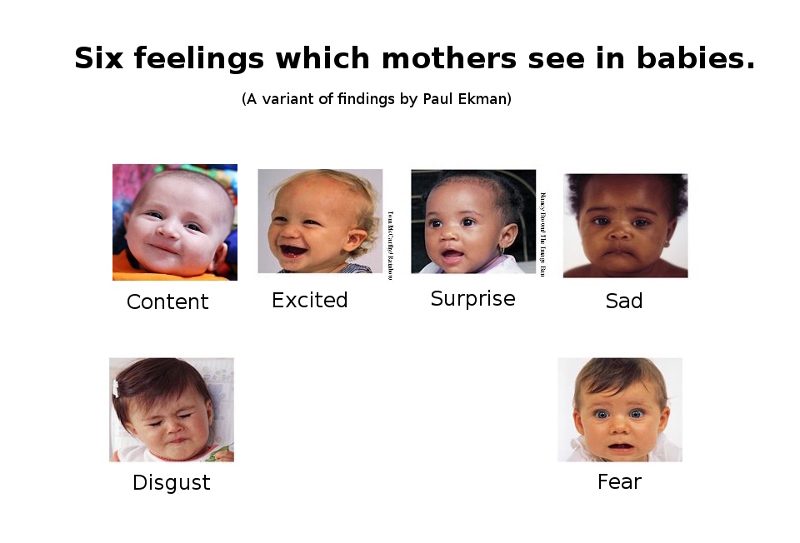
A first step is to model our most basic emotional responses. I started with six responses which are essentially those which psychologist Paul Ekman found can be observed in the faces of young infants, namely: happiness, sadness, excitement, surprise, fear and disgust. What is the simplest way that I might evoke these responses within myself? I once read that we are struck by existential sadness when our deeply held assumptions turn out to be wrong. So I imagined myself as a child playing with alphabet blocks. I would pick up a block, guess what letter was on the other side, and see if I was right.
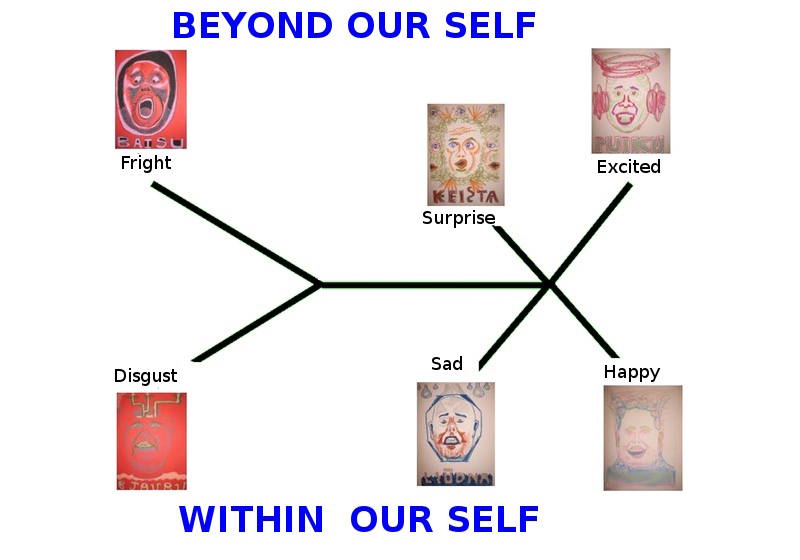
Suppose I don't know the block very well. If I guess wrong, then I am surprised, but if I guess right, then I am excited. However, if I know the block with absolute certainty, if I can't imagine I could be wrong, if my self and my world depend on that, and yet indeed I am wrong, then I feel devastated, but if I am right, I feel content and assured. And so by such introspection it is clear that our cognition grounds our emotion. A crucial distinction is between that knowledge which we personally identify with, by which we define ourselves, and that knowledge which is more distant, exploratory, theoretical. When I experience the unexpected, then if it comes from beyond, I am frightened, and if it comes from within, I feel disgusted.
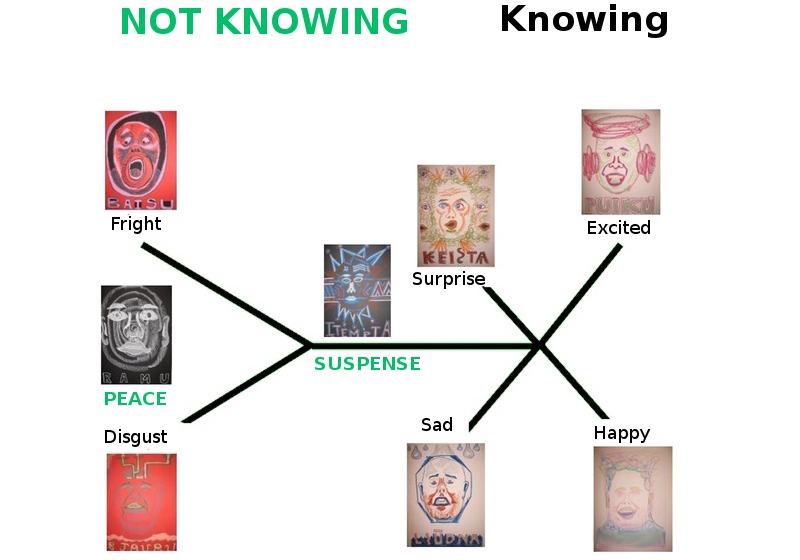
The structure of this model gives subjective meaning to the facial expressions we observe. It also makes sense of two emotional responses which we can introspect but which we do not and cannot observe, namely peace and suspense. We feel suspense after we have made an expectation and before we know whether it has been met, and we feel peace when we make no expectations. These are responses of not knowing, whereas the other six are for knowing. We see from this model that seeking peace (which has us be sensitive to all emotions) and seeking happiness (by avoiding sadness) are two very different approaches to living.
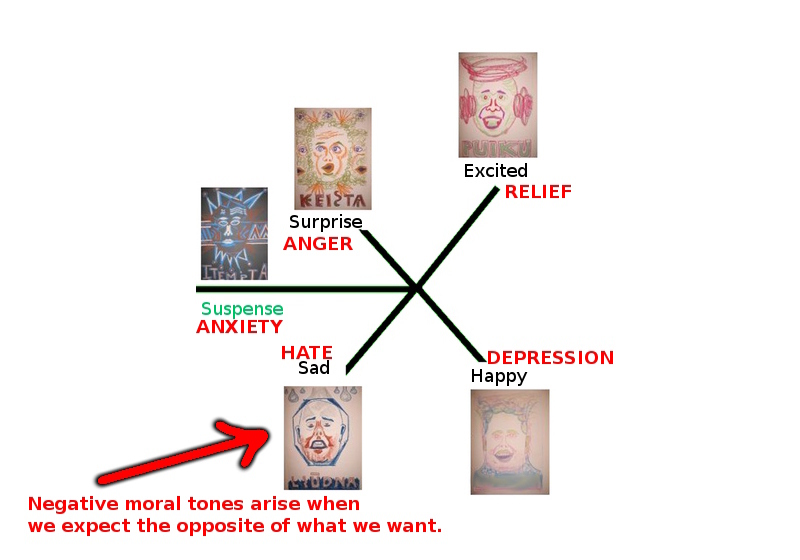
Next, I explain how a moral dimension arises when we make expectations about our expectations, for example, when we judge that our expectations will likely not be met and thus we become anxious that we will be sad. Negative moral tones arise when we expect that which we do not wish. Reflecting on this discord, our suspense becomes anxiety. If our suspicions are confirmed, then we feel hate (rather than sadness) and anger (rather than surprise). If our suspicions are refuted, then we feel relief (rather than excitement) and depression (rather than happiness). We thus find that depression occurs precisely when we could have been happy (because what we wanted to expect actually happened) but instead we feel incapacitated (because we wrongly expected what we did not want).
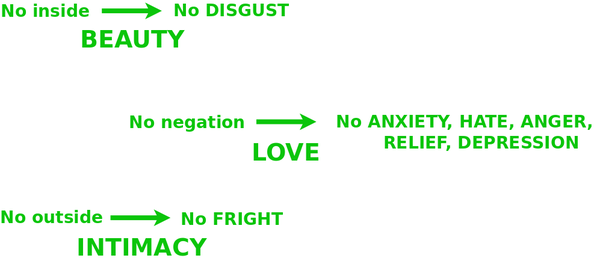
We feel positive moral tones as the impossibility of negative moral tones. For example, if we only expect what we truly wish for, then we feel love as the impossibility of hate. If we perceive that everything is outside of us, then disgust is impossible, and so we feel beauty. If we perceive that everything is within us, then fright is impossible, and so we feel intimacy. Thus we feel love, beauty and intimacy not as our own emotional responses, but rather as emanating from our environment - loving, beautiful, intimate.
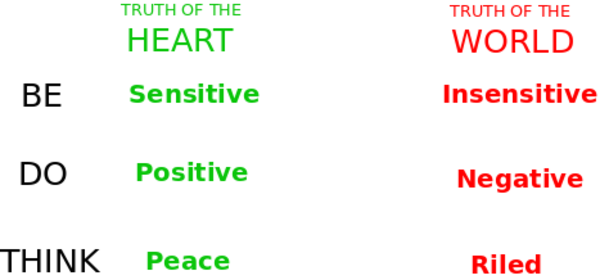
Why then do we have feelings and moods? Our moral sense points to the distinction between what we want and what we expect. We don't truly know what we want, what we should want. The truth of the world is that we are here and now in these circumstances, but the truth of the heart is that we don't know why. Yet even so we can formulate expectations that represent our best answer. Our feelings then serve to guide us, do we feel alive or dead? If our expectation is from the depths of our heart, from our spirit of unknowing, then we are sensitive, and otherwise insensitive. When we do the right thing, then we feel good, otherwise bad. And when we reflect, when we are thinking correctly, then we are calm and otherwise riled.
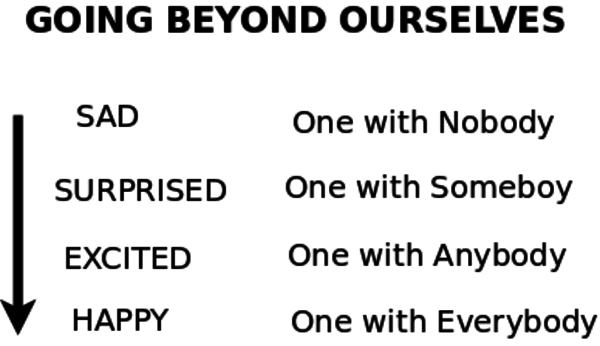
What do we truly want? I think that we wish to live one with God and all. We are sad to be one with nobody, surprised to be one with somebody, excited to be one with anybody and happy to be one with everybody. Our emotional responses invite us to get things done with others: when happy - delegate, excited - initiate, surprised - articulate, sad - renew, frightened - confront, disgusted - make ourselves heard, in suspense - exercise sheer will, and at peace - respond. However, our feelings are generally much more complicated and so are our expectations as to who we truly are.

If we listen to our feelings, then we can grow aware of ourselves and learn that our expectations are not exactly what we want and we can adjust them accordingly. I think that we grow aware of this by stepping into ourselves and stepping out of ourselves. In doing so, we discover our selves to consist of complicated expectations which we have constructed over our lives. They include what we think we know of justice, loyalty and duty. It is vital that we take our principles to heart, internalize them, in which case we sense our own will but also a greater will, beyond our circumstances, I say God's will, with which we align, for we obey not knowing why, we believe not knowing how, we care not knowing what. Upon thus stepping into ourselves, we may sense ourselves surrounded by positive moral tones of love, beauty and intimacy, which are like moods in that they engulf us, and indeed, like canvases for moods because they may last for hours or days, long enough for us to step out of our old expectations. We define ourselves on those canvases in terms of new expectations thanks to the virtues of hope, which looks forward, courage, which holds firm, and honesty, which looks back.
Let us now investigate how our expectations can give rise to thousands of moods. We might study music, dreams, activities, but especially, poetry. Are two people able to interpret a poem in the same way so that it evokes the same mood?
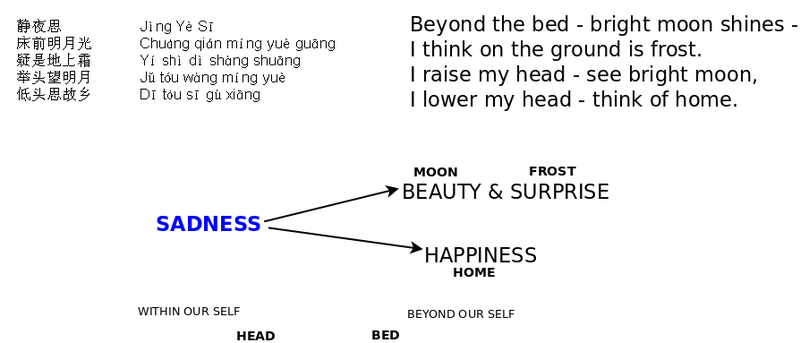
Quiet Night Thoughts, by Chinese poet Li Bai of the Tang Dynasty, is a classic poem about his travels far from home.
Beyond the bed - bright moon shines - I think on the ground is frost. I raise my head - see bright moon, I lower my head - think of home.
Note how this poem organizes the spaces for our expectations. The bed is a boundary beyond which we feel the moon is beautiful and the frost is surprising. The poet's neck, which raises and lowers his head, is yet another boundary. The poet thinks of home, which is dear to him, and of itself that surely makes him happy. Yet when he contemplates that his home is so distant, it is sad to think that he is here and not there. Overall, we can specify a mood of conditional sadness, which depends on his reflection on his great distance from his happiness, as measured by the beauty of the moon and the surprise of the frost.
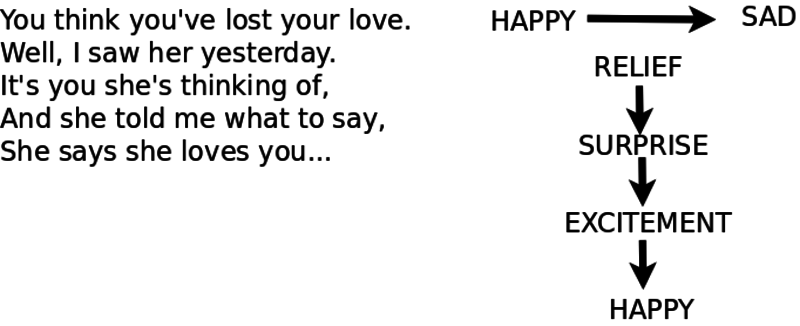
This example suggests that we can specify moods in terms of geometry. In this case, the geometry is simple, like a vector pointing from his head. It could be more sophisticated if he looked back and forth upon himself, as if on a line, extending in two directions. We can add other people with their expectations, which may be parallel or perpendicular, at angles to each other. We might imagine them sweeping out areas or volumes with their changing expectations. Consider the Beatles' song, She Loves You:
You think you've lost your love. Well, I saw her yesterday. It's you she's thinking of, And she told me what to say, She says she loves you...
The very first line lets us imagine that the boy was happy to be in love, and sad to have lost his love. The singer establishes an intimacy from which he further layers expectations and increases suspense with an intermingling of fright or even disgust: Where did he see her? What does she think of me? What did she tell him to say? The singer frames the boy as depressed, makes him reflect upon himself, and from there reorients him through a dizzy crescendo of feelings: relief, then surprise, then excitement and happiness. If we stop here, then the overall mood is an acceleration into exhilaration. But this could be extended by a sadness that they are not together, or as the song later suggests, complicated by an anger and hatred inasmuch as he came to expect her to leave him, confounded by a depression that he had lost hope, and then perhaps a second anger at her and a third anger at himself that he must now let go of his bad expectations.
By listening to our moods we can tease apart our expectations and transform negative ones into positive ones so that in every way we expect what we truly wish. We grow more sensitive and also our principles prove more sound. Whereas those who escape their moods, for example, by turning to cigarettes, alcohol or drugs, are evidently stunting themselves.
We often don't know why we feel the way we do. It's often not clear if we are responsible for our mood or if it is simply random. Yet it seems healthy to listen to our moods and try to learn from them, to groom our feelings, to tune ourselves like musical instruments. It seems that our unconscious mind challenges our conscious mind by showing what its principles look like under the light of a variety of different moods. This way we don't have to learn everything from experience. This seems to be the purpose of our moods. A Chinese poet's principles may lead him to journey to some distant province and yet his moods may have him question himself.
I invite us to work together to analyze hundreds of poems and discover a geometry of moods.
